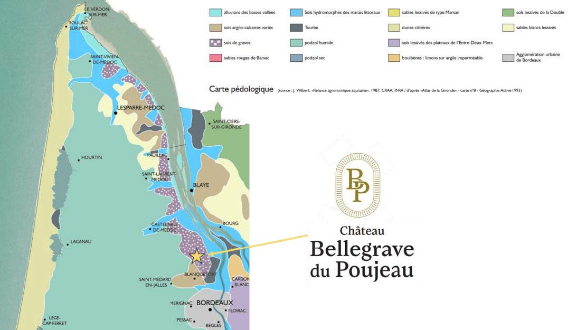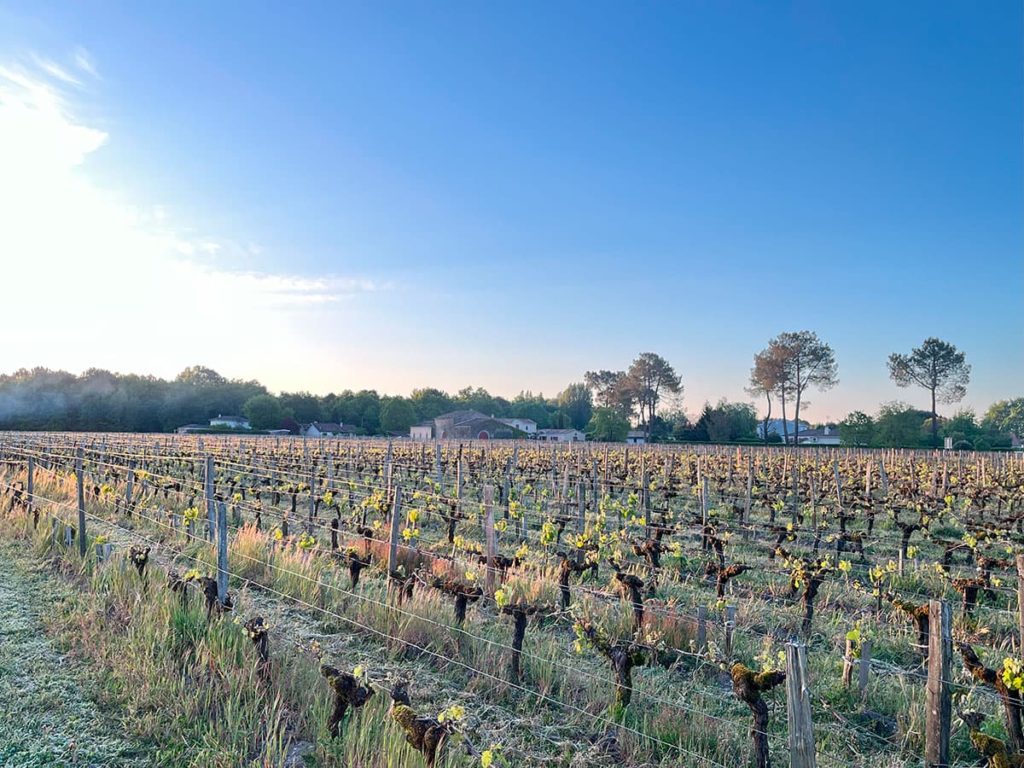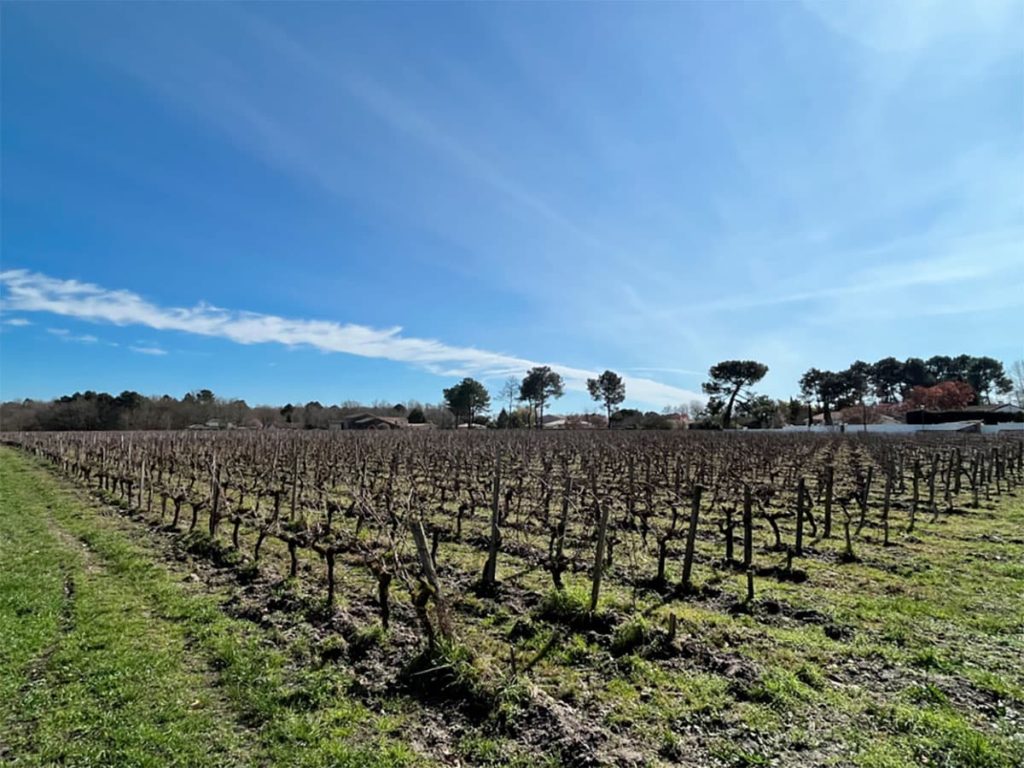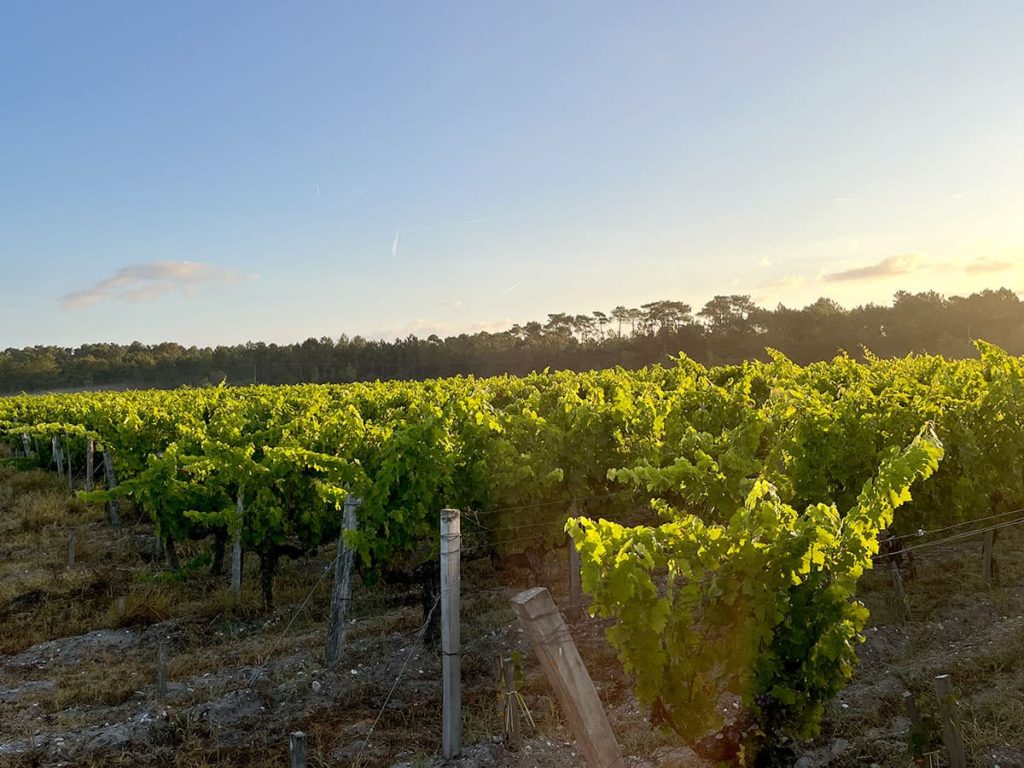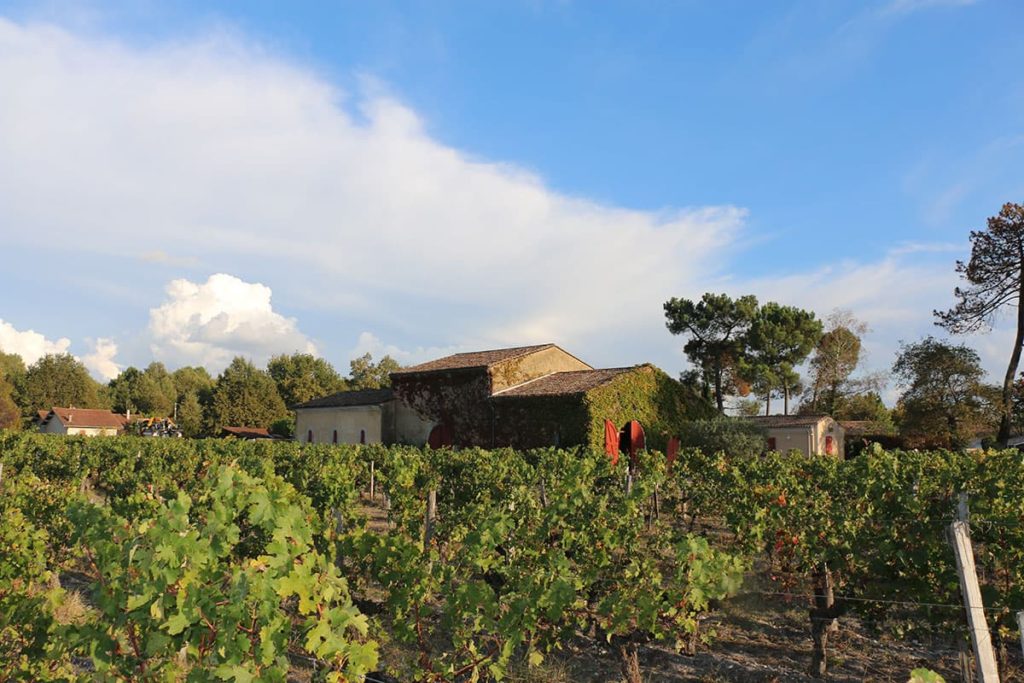The Roots
Accueil | The roots
Our history
In 1881, Edouard Féret wrote: “Bellegrave-du-Poujeau is located, as its name suggests, on a gravelly soil particularly well-suited for the cultivation of vines. Its vineyard, now over 20 years old, is exclusively planted with the best grape varieties of the Médoc. It produces a highly reputed wine.”
Listed as a Cru Bourgeois as early as the late 19th century, Château Bellegrave du Poujeau received its first classification in 1932.
Destroyed by the devastating frost of 1956, the vineyard was replanted in 1981 by a new owner, Jean-Pierre Cantelaube, on some of the best soils at the top of the gravel rise. Château Bellegrave du Poujeau reconnected with its history through the planting of emblematic grape varieties of the Médoc (Cabernet Sauvignon, Cabernet Franc, and Merlot).
In 2022, the Cantelaube family handed the estate down to two long-time family friends, from the Pineau and Paré families. Passionate about wine, Didier and Claire-Marie chose to embark on a new wine-making adventure, encouraged by two factors: the quality of the terroir and wine, and the manageable size of the vineyard, which they treat and cultivate like a garden.
Terroir
The Château Bellegrave du Poujeau vineyard is situated on a beautiful Garonne gravel hillside in the commune of Le Pian-Médoc, at the southern tip of the Haut-Médoc appellation.
The Garonne gravels, formed during alternating glacial and interglacial periods of The Quaternary, were deposited in terraces along the left bank of the Gironde River. They are renowned as the cradle of many of the Médoc’s grand crus.
Composed of pebbles, gravel and sand, the soils offer excellent drainage, while also retaining the heat necessary for grape ripening.
And the nearby Gironde estuary, with its vast expanse of water, helps moderate temperature fluctuations, creating an ideal climate for viticulture.
